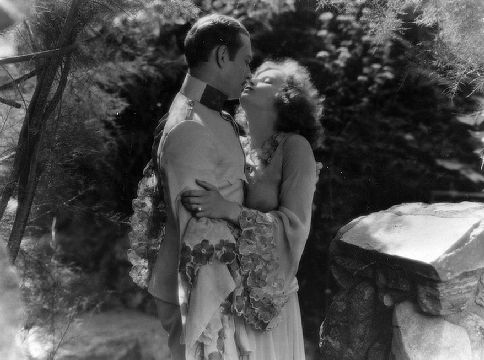The Mysterious Lady (1928) 
“GRETA GARBO AND CONRAD NAGEL The Screen’s Newest Discovery of Perfect Young Lovers”

Director: Fred Niblo
Cast: Greta Garbo, Conrad Nagel, Gustav von Seyffertitz
Synopsis: An attractive Russian spy seduces an Austrian officer in order to get some important plans, but when she actually falls in love with him, both of them are placed in a dangerous situation.
Filmed after the first all-talking film had been released, The Mysterious Lady is, in terms of story, a fairly routine silent spy melodrama that is immeasurably enhanced by the presence of Greta Garbo in the title role. At her most seductive and alluring thanks to the largely faultless direction from under-rated Fred Niblo and William Daniels’ sumptuous cinematography, Garbo dominates whenever she is on screen, relegating Conrad Nagel, a popular and established leading man, to a supporting role.
Garbo plays Tania Fedorova, a soviet spy in pre-world war Europe who seduces army Captain Karl von Raden (Nagel) with the intention of stealing military documents from him. However, she falls in love with the dashing captain. When Raden, who is subsequently informed of her true identity, rejects her love, she steals the documents and Raden is disgraced as a traitor. Escaping from military prison, he travels to Warsaw in pursuit of her…
The film’s story is strictly routine, and it is unlikely that it would even be remembered today were it not for Garbo’s presence. Boasting MGM’s typical high production values, the women’s fashions are placed squarely in the late twenties, despite the film supposedly taking place around the turn of the century. The camera lingers lovingly on Garbo’s face, capturing both her ravishing beauty and the duplicitous nature of her character throughout. Her true feelings repeatedly surface each time her companion — whether it is Raden or the dastardly General Boris Alexandroff (Gustav von Seyffertitz) — turns away from her, and the close-up of the deep kiss between her and Raden in which she slowly opens one eye and glances up at the ceiling is truly sublime.
Silent movies were already doomed when this film was released, and it offers the viewer one of the last examples of Hollywood’s artistic heights in terms of the use of lighting and shadows and of shot composition. Imprisoned by sound, the camera spent the first years of talking pictures in a soundproof booth, and cinema lost the kind of beauty evident in this film. When it was once again freed from the booth the camera somehow seemed to have lost that eye for beauty and, with the distraction of sound, it has never really recaptured it.
(Reviewed 29th October 2005)
httpv://www.youtube.com/watch?v=Pmsl9kgPgQQ
